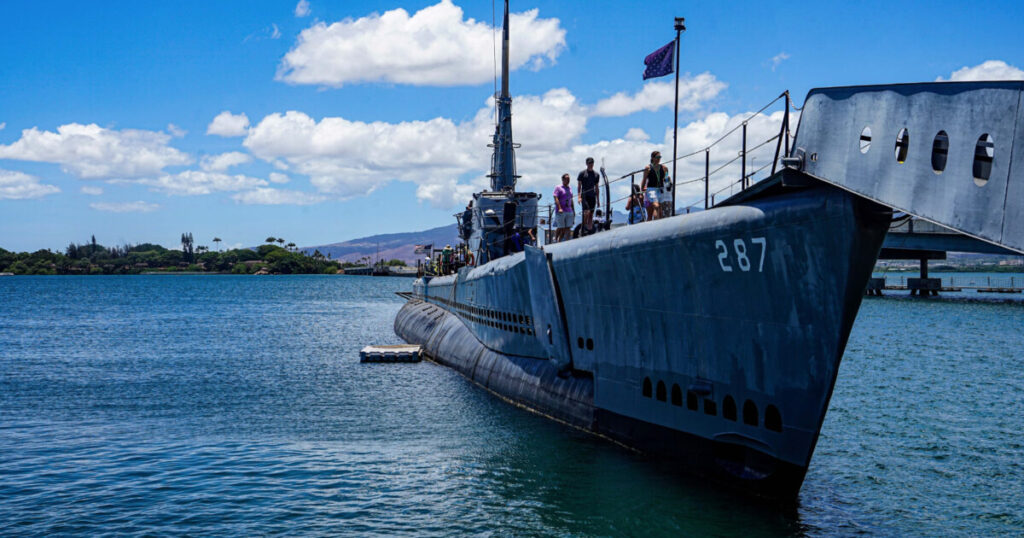Think about how different our lives would be if robots could fight battles, predict threats, and even assist with complex military strategies. This isn’t just a futuristic fantasy; it’s happening right now.
The integration of AI in the military has changed defense strategies and operations worldwide. Artificial intelligence is making militaries smarter and more efficient -from drones that seamlessly survey vast areas to AI systems designed for targeting cyber threats.
This article explores how AI is used in the military and examples of AI applications in defense. You also get to find out whether AI will replace human soldiers or not.
How is AI Used in the Military?
AI technologies are deployed across various military applications, enhancing efficiency, decision-making, and operational capabilities. Here’s a look at some key areas where AI is making an impact:
Autonomous Vehicles and Drones
Unmanned aerial vehicles (UAVs), commonly known as drones, and autonomous ground vehicles are increasingly used for surveillance, reconnaissance, and combat operations. AI enables these machines to navigate complex terrains, identify targets, and execute missions with minimal human intervention.
Key Features:
- Surveillance: AI-powered drones can monitor large areas, detect unusual activities, and provide real-time data to command centers.
- Combat: Autonomous drones can carry out precision strikes, reducing the risk to human soldiers.
- Logistics: AI-enabled ground vehicles can transport supplies and equipment, optimizing logistics and reducing human workload.
Intelligence, Surveillance, and Reconnaissance (ISR)
AI enhances ISR capabilities by analyzing vast amounts of data from various sensors, satellites, and other sources. It helps identify patterns, predict potential threats, and provide actionable insights.
Key Features:
- Data Analysis: AI algorithms process and analyze data from multiple sources, providing a comprehensive situational awareness.
- Threat Detection: AI identifies potential threats by recognizing patterns and anomalies in the data.
- Decision Support: AI systems offer recommendations and insights, assisting military personnel in making informed decisions.
Cybersecurity
With the increasing threat of cyber-attacks, AI plays an important role in protecting military networks and systems. AI algorithms detect and respond to cyber threats in real time, enhancing cybersecurity measures.
Key Features:
- Threat Detection: AI monitors network traffic, identifies unusual activities, and detects potential cyber threats.
- Incident Response: AI systems respond to cyber incidents by isolating affected systems and mitigating the impact.
- Predictive Analysis: AI predicts potential cyber threats based on historical data, enabling proactive defense measures.
Predictive Maintenance
AI-driven predictive maintenance systems monitor the condition of military equipment and vehicles, predicting failures before they occur. This ensures the readiness and reliability of military assets.
Key Features:
- Condition Monitoring: AI analyzes data from sensors embedded in equipment to monitor its condition in real time.
- Failure Prediction: AI algorithms predict potential failures, allowing for timely maintenance and repairs.
- Operational Efficiency: Predictive maintenance reduces downtime and extends the lifespan of military assets.
Training and Simulation
AI-powered training and simulation systems provide realistic scenarios for military personnel, enhancing their skills and readiness. These systems simulate various combat situations, allowing soldiers to practice and improve their response strategies.
Key Features:
- Realistic Scenarios: AI creates realistic combat scenarios, providing a safe environment for training.
- Performance Analysis: AI monitors and analyzes soldiers’ performance, offering feedback and recommendations for improvement.
- Adaptive Learning: AI adapts the training scenarios based on individual performance, ensuring personalized training experiences.
Will AI Replace Human Soldiers?
The question of whether AI will replace human soldiers is a topic of significant debate. While AI technologies offer numerous advantages, they are unlikely to replace human soldiers entirely. Instead, AI is expected to augment human capabilities and improve operational efficiency.
Advantages of AI in Military Operations
AI provides several benefits in military operations, including:
- Increased Precision: AI systems can execute tasks with high precision, reducing the risk of collateral damage.
- Enhanced Decision-Making: AI analyzes vast amounts of data, providing insights and recommendations that enhance decision-making.
- Reduced Risk to Humans: AI-powered autonomous systems can perform dangerous tasks, reducing the risk to human soldiers.
Limitations of AI
Despite its advantages, AI has limitations that prevent it from fully replacing human soldiers:
- Lack of Human Judgment: AI lacks the human ability to make complex ethical and moral decisions in unpredictable situations.
- Dependence on Data: AI relies on data for training and decision-making. In the absence of accurate data, AI systems may make erroneous decisions.
- Technical Challenges: AI systems are susceptible to technical failures and cyber-attacks, which can compromise their effectiveness.
The Human-AI Collaboration
The future of military operations is likely to involve a collaboration between human soldiers and AI systems. Human soldiers will continue to play a critical role, particularly in making complex decisions and executing tasks that require human judgment and adaptability. AI will augment their capabilities, providing support in areas such as data analysis, surveillance, and logistics.
Examples of AI in the Military
AI is being used in various innovative ways in the military. Here are some notable examples:
Project Maven
Project Maven is a U.S. Department of Defense initiative that uses AI to analyze video footage from drones. The AI algorithms identify and classify objects, enhancing the efficiency of surveillance and reconnaissance missions.
Key Features:
- Object Detection: AI identifies and classifies objects in video footage, reducing the workload for human analysts.
- Real-Time Analysis: AI processes video footage in real-time, providing immediate insights to military personnel.
- Enhanced Accuracy: AI improves the accuracy of target identification, reducing the risk of misidentification.
Autonomous Submarines

Several countries are developing autonomous submarines that use AI for navigation, surveillance, and combat missions. These submarines can operate independently, performing tasks such as patrolling and reconnaissance.
For example, The U.K.’s Ministry of Defence donated six autonomous underwater drones to Ukraine to aid in their fight against Russia.
Key Features:
- Autonomous Navigation: AI enables submarines to navigate complex underwater environments without human intervention.
- Surveillance: AI-powered submarines can monitor underwater activities, providing valuable intelligence.
- Combat Capabilities: Autonomous submarines can engage in combat missions, enhancing naval capabilities.
AI-Driven Cyber Defense
AI is being used to protect military networks from cyber threats. AI-driven cyber defense systems monitor network traffic, detect potential threats, and respond to cyber incidents.
Key Features:
- Threat Detection: AI identifies unusual activities and potential cyber threats in real-time.
- Incident Response: AI systems respond to cyber incidents, mitigating the impact and preventing further damage.
- Predictive Analysis: AI predicts potential cyber threats, enabling proactive defense measures.
AI-Powered Logistics
AI is optimizing military logistics by managing supply chains, predicting equipment failures, and optimizing transportation routes. This ensures the efficient movement of supplies and equipment, enhancing operational readiness.
Key Features:
- Supply Chain Management: AI optimizes supply chains, ensuring the timely delivery of supplies and equipment.
- Predictive Maintenance: AI predicts equipment failures, allowing for timely repairs and maintenance.
- Route Optimization: AI optimizes transportation routes, reducing travel time and fuel consumption.
AI-Enhanced Training Simulations
AI-powered training simulations provide realistic combat scenarios, enhancing the skills and readiness of military personnel. These simulations adapt to individual performance, providing personalized training experiences.
Key Features:
- Realistic Scenarios: AI creates realistic combat scenarios, providing a safe environment for training.
- Performance Analysis: AI monitors and analyzes soldiers’ performance, offering feedback and recommendations for improvement.
- Adaptive Learning: AI adapts the training scenarios based on individual performance, ensuring personalized training experiences.
The Bottom Line
AI is transforming the military by enhancing capabilities, improving efficiency, and providing a strategic edge.
While AI will not take the place of human soldiers altogether, it serves to complement their operations and make them more effective. Human soldiers supported by machines will form the basis of military operations in a future where AI enables faster decision-making and force movements.
This impact on the military will only be felt as AI technology continues to develop and offer fresh possibilities for security and defense.
| Application | Key Features |
|---|---|
| Autonomous Vehicles and Drones | Surveillance, combat missions, logistics |
| Intelligence, Surveillance, and Reconnaissance (ISR) | Data analysis, threat detection, decision support |
| Cybersecurity | Threat detection, incident response, predictive analysis |
| Predictive Maintenance | Condition monitoring, failure prediction, operational efficiency |
| Training and Simulation | Realistic scenarios, performance analysis, adaptive learning |
| Project Maven | Object detection, real-time analysis, enhanced accuracy |
| Autonomous Submarines | Autonomous navigation, surveillance, combat capabilities |
| AI-Driven Cyber Defense | Threat detection, incident response, predictive analysis |
| AI-Powered Logistics | Supply chain management, predictive maintenance, route optimization |
| AI-Enhanced Training Simulations | Realistic scenarios, performance analysis, adaptive learning |
FAQs
How is AI used in the military?
AI is used in the military for autonomous vehicles and drones, intelligence, surveillance, reconnaissance (ISR), cybersecurity, predictive maintenance, and training simulations.
What military weapons use AI?
Military weapons that use AI include autonomous drones, guided missile systems, and AI-powered surveillance systems that enhance targeting and decision-making.
Will AI replace human soldiers?
AI will not entirely replace human soldiers. Instead, it will augment their capabilities, assisting with data analysis, surveillance, logistics, and decision-making.
How is generative AI used in the military?
Generative AI is used in the military to create realistic training simulations, generate strategic scenarios, and assist in developing innovative solutions for complex problems.

